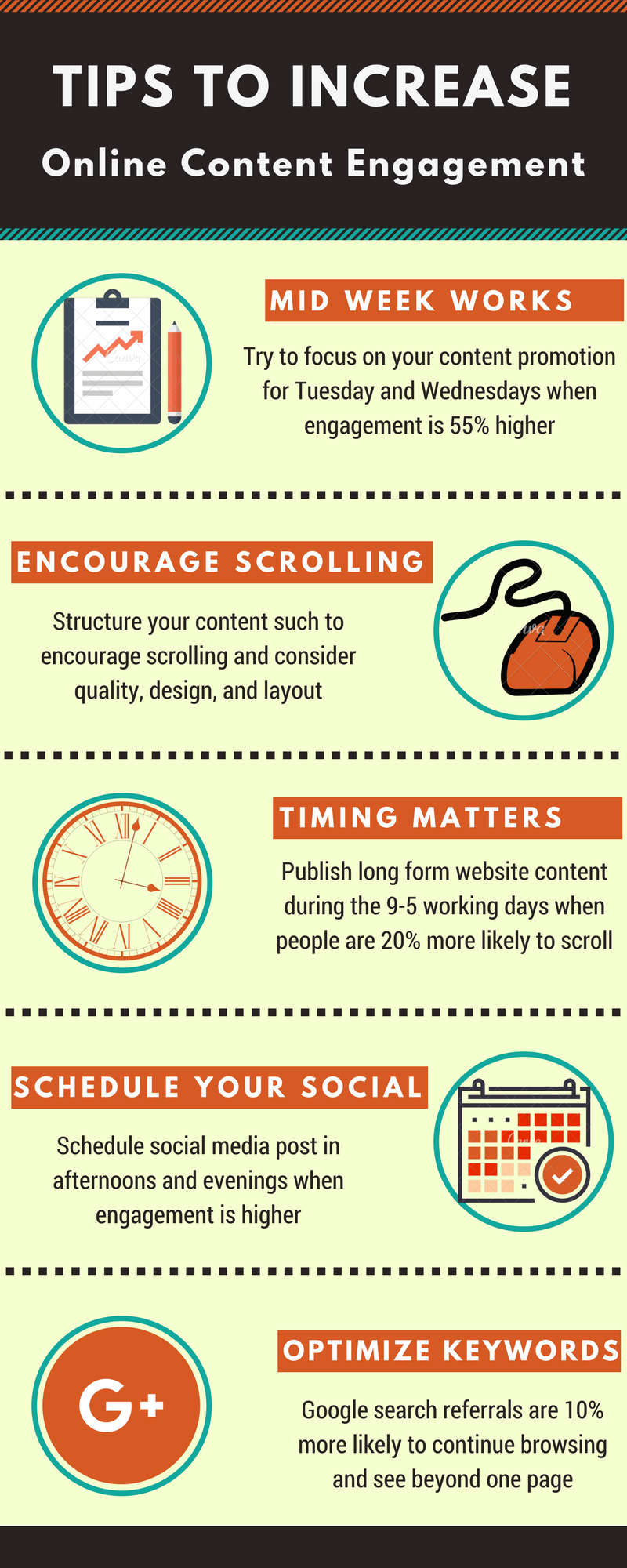
When you write a content you focus on its quality and with it, you also make sure that the content has a great visibility and seen by many people. Your content will only let increase the traffic on your website. Right? But if you didn’t get enough user engagement on your content maybe there is something wrong, but that doesn’t mean your content sucks. It might be the reason that you haven’t put these optimization tips into proper place.
While writing your content you should not forget one important factor and that is an engagement of the users. Check out important factors you must consider while writing content.
But first, understand why user engagement matters a lot.
Know that when a visitor visits your website, if he didn’t get engaged to your content, he will not return for the second time. User engagement plays an important role in letting visitors stay on your content and also for another significant role that is bounce rate.
What is bounce rate? It is the percentage of the visitors who leave your website after scrolling down to just one page of your website. There might be two reasons for it : first, that they may have found out what they were looking for and second, they might not like your website or content.
If your bounce rate is high 70%+ which is an indication that Google didn’t like your website and visitors didn’t like either.
Follow these tactics that will boost user engagement on your content.
1.Shorter Paragraph
When you write content for your website, make sure you use shorter paragraphs while writing. A sentence paragraph of 8 to 10 will make anybody feel lazy to read and users will get detached to your content.
If you will write a shorter paragraph and cover important points in it, it will surely attract users, especially those who are looking for information and have less time.
The more your content have white spaces, the more people will like it and readable, as they might focus on important things which might not get highlighted while reading lengthy paragraphs.
2. Internal linking
Internal linking is a great way to let your visitors go to multiple pages and also beneficial for SEO point of view. It is also a great way to decrease your bounce rate and generate more views on your website and content.
Link related to the content will make users easily get more information about what they are looking for by just clicking on the link available. For example, the link created above might help you to get information about the relevant related post.
3. Ask readers for their opinions
If you want readers to get engaged on your content, you must be open to their opinion and must ask their point of view of the same.
This is a common tactic often done after the end of the article like, “What strategies do you found effective?” Doing this naturally will attract readers to share their opinion and will create a debate and questions that you think might be passionate about.
4. Use a writing style based on audience you are writing
When you’re writing your content, you should be clear to whom you are writing and pitch accordingly. There are prominently two types of writing style. The first one is an informal one, where you write in a friendly tone using personal pronouns and the second one is a formal one, where you just have to keep your words informative and professional that contains a longer sentence.
Using wrong writing style can bring negative impact to your blog. You need to be first clear about your targeted audience and then write accordingly.
5. Get social
When you post a content on your website, it looks quite usual to post it on a social platform. These days, with the update of Google, SEO, SMM getting popular, it is necessary that while you do the plugin you must have social media icons.
Using Facebook like button, twitter retweet button and google plus are quite necessary and you may also add few other social media icons. A maximum of 5 icons is sufficient if you are adding it to your content.
Hopefully, these important user engagement tactics will let your content get a number of visitors and may decrease the bounce rate.




